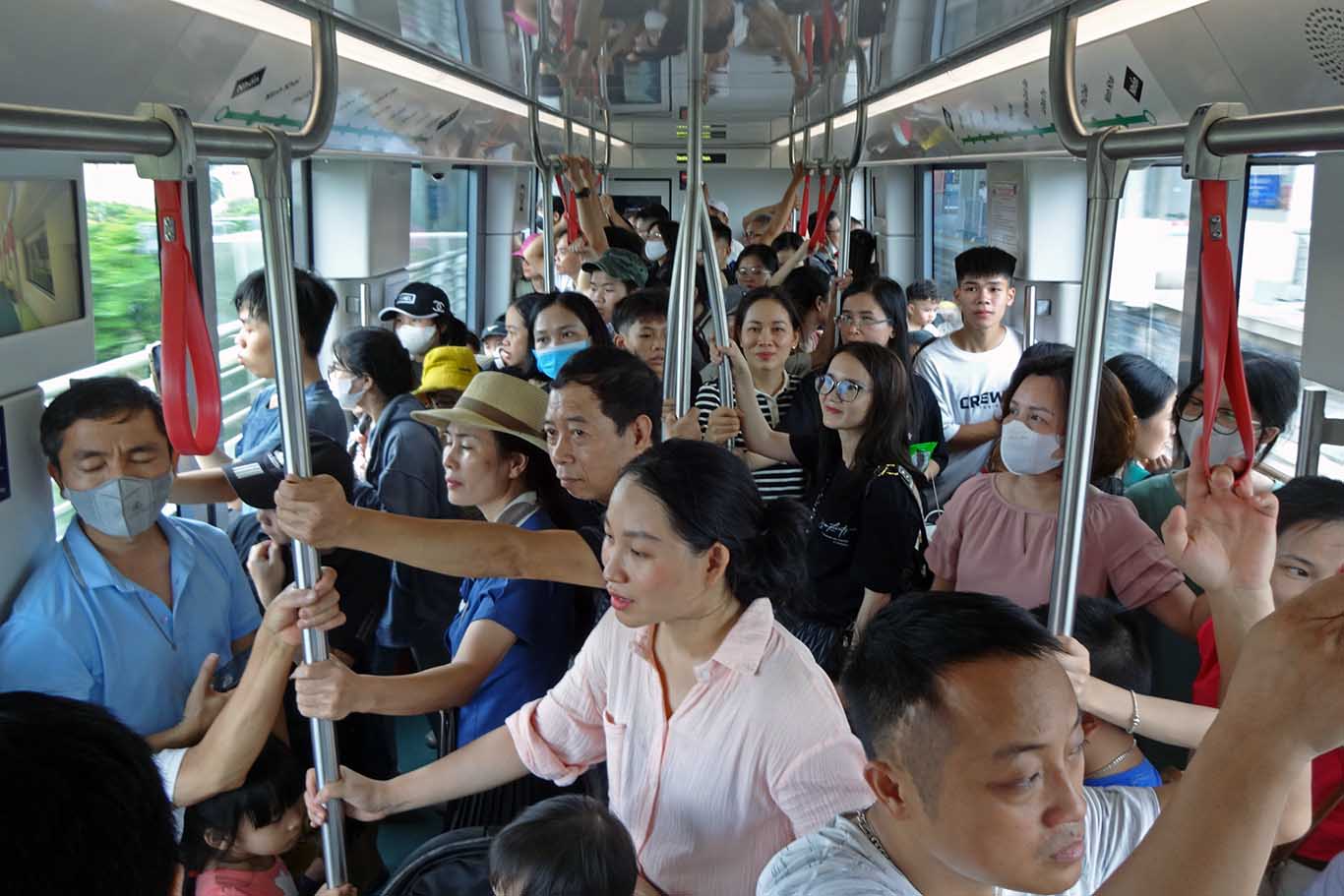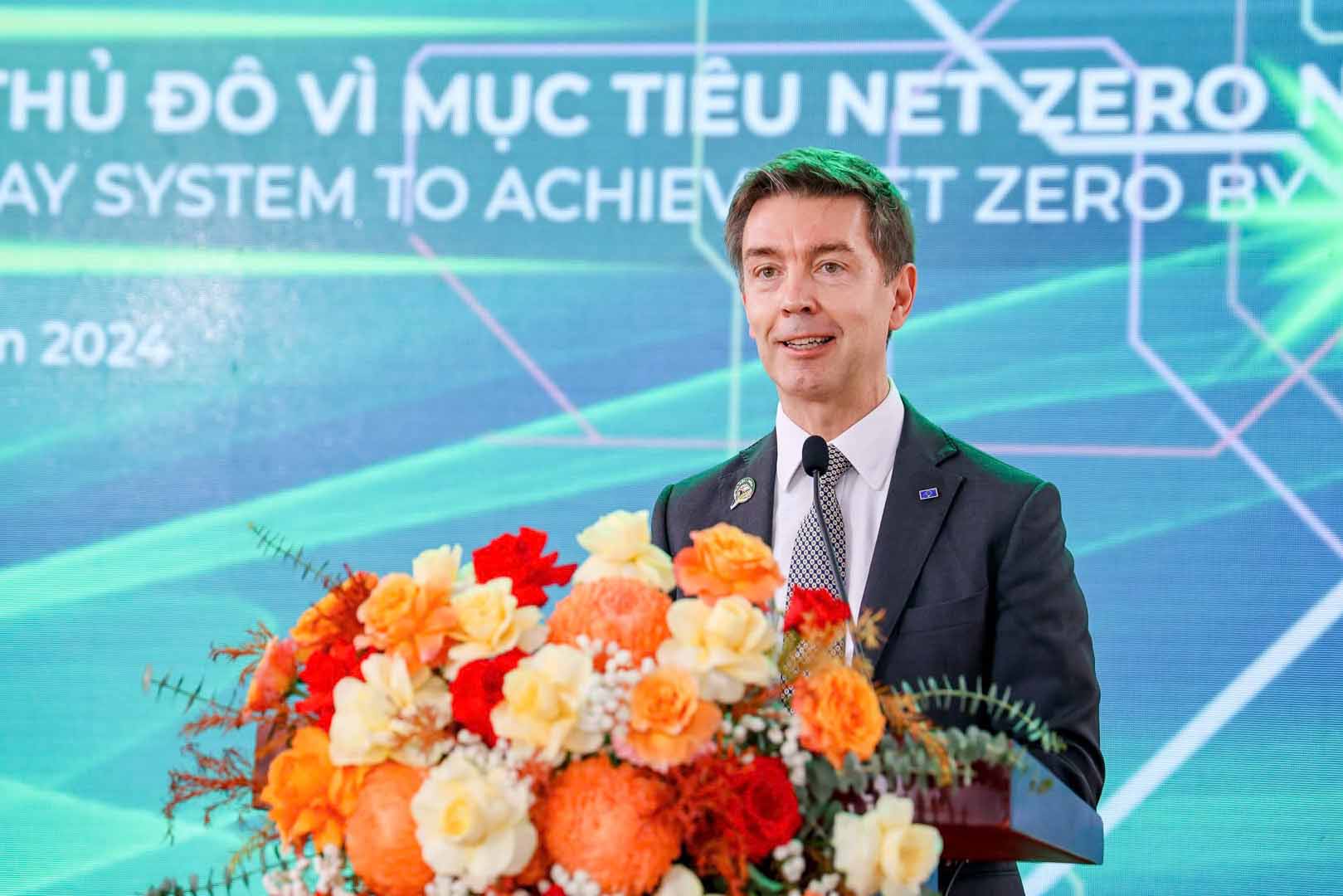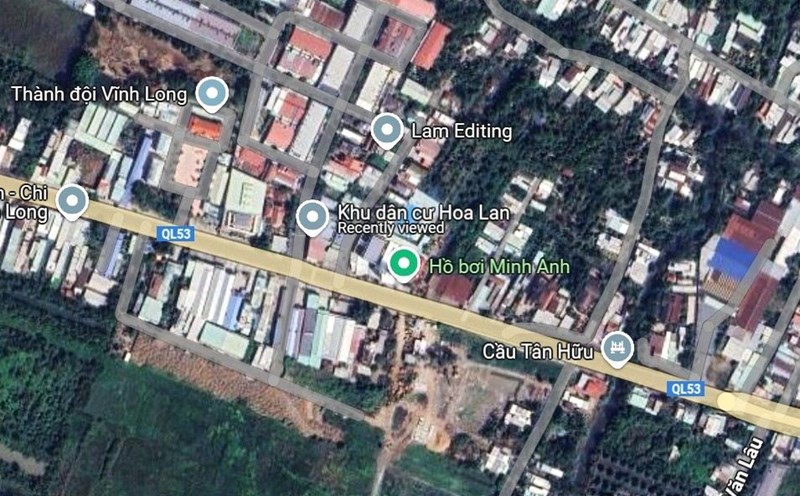Customers gradually stabilize
Hanoi has put into commercial operation two urban railway lines, including Line 2A Cat Linh - Ha Dong (from November 2021) and the elevated section of Line 3 Nhon - Hanoi Railway Station (from August 2024).
The urban railway lines (metro) coming into operation help people have more options for transportation. Thereby contributing to reducing environmental pollution by reducing travel by private vehicles, reducing traffic congestion, contributing to improving daily life and urban appearance.
According to Hanoi Metro Company Limited (Hanoi Metro - the operator of metro lines in Hanoi), currently on weekdays from Monday to Friday, the elevated section of the Nhon - Hanoi Station metro line serves an average of over 18,000 - 19,000 passengers per day. On Saturday and Sunday, it serves about 12,000 - 14,000 passengers.
For the Cat Linh - Ha Dong route, on weekdays it carries an average of 43,000 - 44,000 passengers. On weekends, the train carries about 22,000 - 24,000 passengers.
The number of passengers on metro lines is estimated to be increasing every day.

According to a survey by Lao Dong Newspaper reporters, passengers who regularly use the train are mainly office workers, students, and pupils.
Ms. Nguyen Thanh Nga (Ha Dong District) - an office worker at a company on Nguyen Chi Thanh Street (Dong Da District) shared that for nearly a year now, she has been combining two types of public transportation to go to work. Accordingly, Ms. Nga will take the train from Van Quan to Lang Station. After getting off the train, Ms. Nga will ride a public bicycle from Lang Station and return the bicycle at the station near the Women's Academy (Nguyen Chi Thanh Street). From the bicycle return point to Ms. Nga's workplace is only about 300m, very convenient.
However, with the increasingly complicated traffic situation and increasing congestion, only two metro lines in operation are still not enough to meet people's needs.
In addition, the means of connecting the two lines are still limited, line 3 is not yet complete (there is still 4km underground under construction). The stations of the metro lines have not yet taken full advantage to attract more passengers, for example, there are no shopping areas, fast food outlets, parking lots... to serve passengers.
Good news continuously
According to information from the Hanoi Urban Railway Project Management Board (MRB), on December 16, Deputy Prime Minister Bui Thanh Son signed a decision approving the adjustment of the investment policy for the construction project of urban railway line No. 2, Nam Thang Long - Tran Hung Dao section. This is a vital traffic route, contributing to the modernization of public transport in the capital.

In terms of scale, metro line 2 is 11.5km long, including 8.9km underground and 2.6km elevated, with a total of 7 underground stations and 3 elevated stations. Means of transport include 10 4-car trains, 1,435mm gauge double-track railway and 1 depot at Xuan Dinh - Bac Tu Liem.
The project was approved in 2009 and is expected to be completed in 2031.
After the investment policy adjustment is approved, the Project will re-mobilize general consultants to adjust the project for the City People's Committee to approve and implement the Project from 2025.
Metro Line 2, when completed, will form an important backbone, connecting the inner city area, Noi Bai International Airport and the northern urban area of Hanoi.
Previously, at the commercial operation ceremony of the elevated section of the Hanoi pilot urban railway line, Nhon - Hanoi station section in November 2024, Mr. Julien Guerrier - Ambassador of the European Union (EU) to Vietnam informed that, through the partnership with the French Development Agency (AFD), the EU has mobilized 10 million euros to finance activities to prepare for the expansion of the Nhon - Hanoi station metro line to Hoang Mai district.

The Hanoi People's Committee has determined that urban railways will be the "backbone" of the public transport system, contributing to solving the problem of traffic congestion, gradually building a civilized and modern capital.
In order to overcome the delay in investment progress, Hanoi has established a project to complete the railway system by 2035.
In the next 10 years, the city will invest in developing 10 urban railway lines with a total length of nearly 410km. In the 2035-2045 period, the city will continue to invest in developing 5 additional railway lines, increasing the total length of urban railways to more than 600km.
It can be seen that the number of passengers is continuously increasing steadily on operating routes, and the clear direction of metro development is bringing joy to the capital's public transport.











